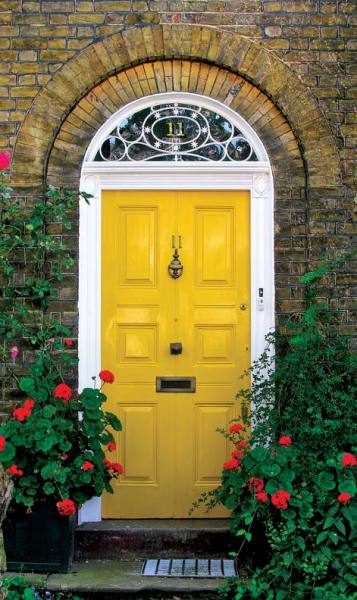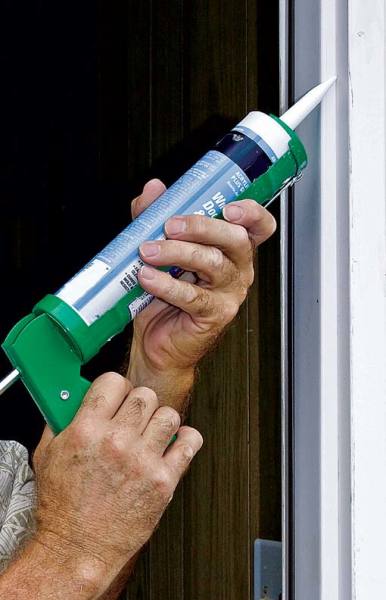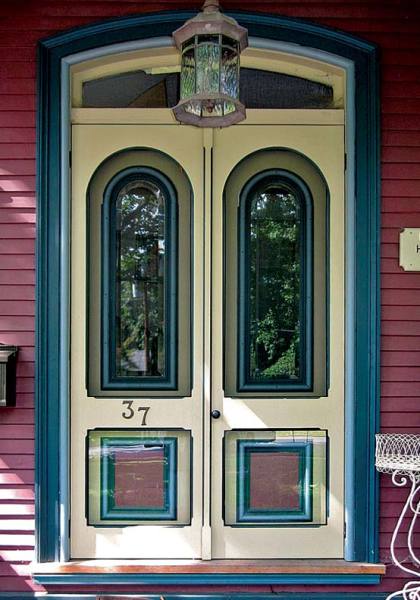
With some tune-ups, original doors can be just as efficient as new ones.
Kasia Gryniewicz/Fotolia.com
The world comes in and out of your house’s doors: friends, family, pets, neighbors—and energy, too. As one of the largest permeable barriers between your home and outside, entry doors can account for a large chunk of a home’s energy loss—as much as 11 percent, by some estimates.
Though plenty of folks tout the energy value of modern foam-core steel or fiberglass doors, a thick, well-constructed wood door can offer just as much protection from the elements—wood has excellent natural insulation properties, and it’s historically accurate to boot.
A few simple tune-ups will help ensure that your original wood doors continue to let the world in while keeping the weather out.
1. Close the gaps.

Caulking and weatherstripping can help to seal gaps around the doorframe.
Ernest Prim/Fotolia.com; OurLittleBeehive.com
Assuming your door is in good shape, most energy loss likely occurs in the spaces around the door, rather than through the door itself. First, make sure the door is hanging securely on its hinges—any looseness can cause gaps between the door and the doorframe. Next, you can use silicone caulk to fill in any gaps around the doorframe. (Remember, only use caulk on fixed—not moving—parts. Also, if the gap is larger than ¼”, fill it with a foam backer rod before applying caulk.)
2. Weatherstrip it.
While caulking helps seal gaps between the doorframe and the wall, weatherstripping will tighten up spaces between the doorframe and the door. Compressible foam or rubber weatherstripping is a good choice for doors, as it will compress to offer the tightest seal possible when the door is closed. (If you don’t like the look of compressible weatherstripping, brass strips are another, more historic option, but are more difficult to install.) Don’t forget the bottom of the door: Rubber or bristled door sweeps installed on the interior of the door, or a threshold with a flexible center bulb, can help to prevent air leakage between the door and threshold.
3. Consider storms.
Like storm windows, storm doors can help mitigate energy loss by providing an extra barrier for air to travel through. However, because thick wooden doors are typically well-insulated, storm doors aren’t always necessary or cost-effective—the National Park Service’s Technical Preservation Services recommends storm-door installation only in cold climates or with doors that have glass panels. If you do decide to install a storm door, select one that complements the architecture of your house.

Storms can provide an energy buffer for doors with ample glass.
Courtesy of Victoriana East
4. Don’t forget the glass.
Doors that incorporate glazing in some form (whether sidelights, a transom, or inset glass panels) can be more susceptible to energy loss than their solid-wood counterparts. Make sure that any glass in and around your door is properly secured and in good condition. For particularly cold climates, you can add a simple, unobtrusive storm. Wood-framed glass or even a plain old sheet of plexiglass secured around sidelights adds another layer to both buffer the weather and protect historic panes from damage.







